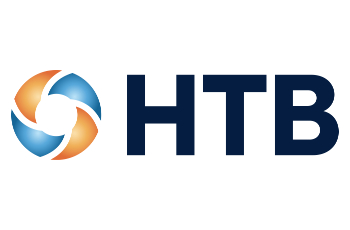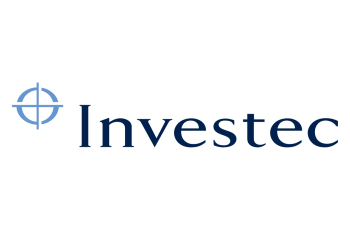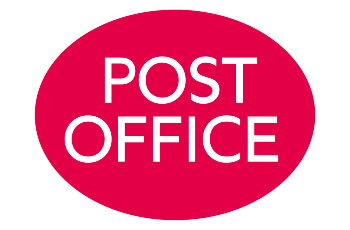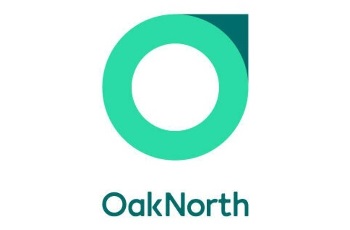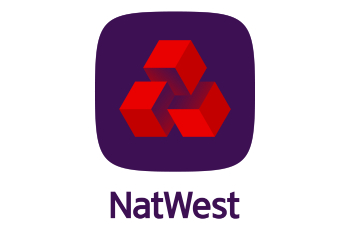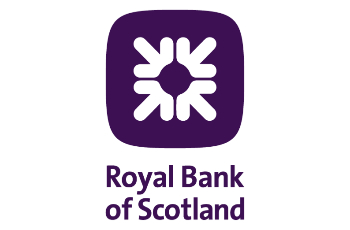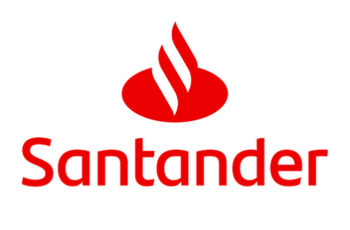This comparison simply includes all savings accounts.
Savings Accounts That Are Tax Free
Savings accounts that are tax free
When putting your money into a savings account, you need to consider how long you intend to save for and how much of a return you would like to see. You can then compare the different types of savings accounts available to see which ones best match you saving goals.
Tax-free interest on savings accounts.
From April 2016, you are entitled to a personal savings allowance.
If you are a basic rate taxpayer, you could earn up to £1,000 in interest without having to pay tax. The tax allowance for those paying a higher rate of tax is £500.
If you are looking to build up savings tax free the you should consider a ISA.
Cash ISAs
UK tax payers normally have to pay tax on any interest they earn on their savings. However, a cash ISA allows you to earn interest, tax-free, on deposits up to an agreed yearly limit. For the 2017/18 tax year that amount is £20,000.
There are two main types of cash ISAs – instant access and fixed-term. Instant access cash ISAs allow you to withdraw money whenever you need without paying a penalty, making them ideal for short term saving. Fixed-term cash ISAs have similar conditions to fixed rate bonds, so you may be unable to withdraw money until they reach the end of their term or have to pay a penalty in order to do so.
Cash ISAs allow you the flexibility to withdraw as much of your savings as you wish and replace it without it counting towards your annual ISA allowance.In order to benefit from this flexibility, you must replace the money within the same tax year.If you fail to replace the money you withdraw from your savings in the same tax year, your ISA allowance will be affected.
You can also transfer your savings from one ISA to another, if you are so inclined, without affecting your ISA allowance. Therefore, it is possible to open a cash ISA for your 2017/2018 allowance and transfer your savings from your existing ISA into it as well.It is important to note that not all providers will allow transfers from existing ISAs.
Cash ISAs do not always offer the best interest rates, so you will need to assess whether any tax savings will outweigh the benefits of the higher interest rates provides by other types of accounts.
Find the best short term savings account for you
With so many different brands and products on the market, it can be hard to figure out which offer the best deals for you. The comparison table at the top of this page is regularly updated with the most attractive deals on short term savings accounts from across the industry. This makes it easy for you to contrast the features of different accounts and find the right one for your saving needs.
Guide to the Best Tax-Free Savings Accounts in the UK
1. Understanding Tax-Free Savings Accounts
Tax-free savings accounts, commonly known as ISAs (Individual Savings Accounts), offer a fantastic way to save and invest money without paying income tax or capital gains tax on the returns. These accounts are a valuable tool for anyone seeking to maximise their savings while minimising their tax liabilities.
1.1 What are Tax-Free Savings Accounts?
Tax-Free Savings Accounts, or ISAs, were introduced by the UK government to encourage more people to save and invest. They come with attractive tax benefits, making them an essential component of a well-rounded financial strategy.
Key features of tax-free savings accounts include:
- Tax-Free Growth: Any interest, dividends, or capital gains earned within an ISA are entirely tax-free, allowing your money to grow faster over time.
- Flexible Savings Options: ISAs come in various forms, catering to different financial objectives. From cash ISAs for risk-averse savers to stocks and shares ISAs for investors seeking higher returns, there's an option for everyone.
- Annual Allowance: Each tax year, you have an ISA allowance, which is the maximum amount you can invest in ISAs without incurring tax on the returns. Staying within this limit ensures you make the most of the tax benefits.
1.2 Advantages of Tax-Free Savings Accounts
Tax-free savings accounts offer numerous advantages that can significantly boost your financial prospects:
- Tax Efficiency: As the name suggests, the primary advantage is tax efficiency. You can keep more of the returns you earn within an ISA, allowing your money to compound at a faster rate.
- Versatility: ISAs come in various types, including Cash ISAs, Stocks and Shares ISAs, Lifetime ISAs, and more. This versatility enables you to tailor your savings strategy to align with your risk tolerance and financial goals.
- No Capital Gains Tax: With an ISA, you won't pay capital gains tax on any profits you make when selling investments. This can be particularly advantageous for individuals with substantial investment gains.
- Income Tax Savings: Income earned from interest or dividends in a regular savings account is typically subject to income tax. However, with a tax-free ISA, you get to keep all your earnings, providing a significant boost to your overall savings.
1.3 Eligibility and Contribution Limits
To open an ISA, you need to be a UK resident and over the age of 18 for most types of ISAs. However, some, like Junior ISAs, are available for children under the age of 18. The ISA allowance for the current tax year is £20,000, meaning you can contribute up to this amount across one or more ISA accounts. It's worth noting that your annual allowance resets at the beginning of each tax year, so be sure to make the most of it before the deadline.
2. Types of Tax-Free Savings Accounts
2.1 Individual Savings Accounts (ISAs)
Individual Savings Accounts (ISAs) are the most popular and widely used tax-free savings accounts in the UK. They come in two primary forms:
- Cash ISAs: Cash ISAs are suitable for risk-averse individuals who prefer to keep their savings in cash, such as a savings account or cash-based investments. They offer a fixed or variable interest rate, providing steady and predictable returns.
- Stocks and Shares ISAs: If you're comfortable with investing in the stock market, a Stocks and Shares ISA might be a better fit for you. This type of ISA allows you to invest in various assets like equities, bonds, and funds, potentially offering higher returns than a Cash ISA over the long term.
2.2 Lifetime ISAs (LISAs)
Lifetime ISAs (LISAs) are designed to help individuals save for their first home or for retirement. To be eligible, you must be aged between 18 and 39. The government provides a generous 25% bonus on contributions, up to a maximum of £4,000 per tax year. However, there are specific rules regarding when and how you can withdraw funds from a LISA, so be sure to understand these before opening one.
2.3 Junior ISAs (JISAs)
Junior ISAs (JISAs) are tax-free savings accounts created for children under the age of 18. Parents or legal guardians can open and manage the account on behalf of the child until they reach adulthood. JISAs come in two types, similar to regular ISAs: Cash JISAs and Stocks and Shares JISAs. The annual allowance for JISAs is also subject to change, so it's essential to stay up-to-date with the latest guidelines.
2.4 Help to Buy ISAs
Help to Buy ISAs were a government-backed scheme to assist first-time homebuyers. Although this scheme is no longer available for new applications, those who have already opened a Help to Buy ISA can continue saving into it until they claim their government bonus. It's essential to understand the terms and conditions of this type of ISA, particularly the deadline for claiming the bonus.
2.5 Innovative Finance ISAs (IFISAs)
Innovative Finance ISAs (IFISAs) are an option for individuals interested in peer-to-peer (P2P) lending and other alternative finance investments. These ISAs allow you to lend money directly to individuals or businesses, potentially earning higher interest rates compared to traditional savings accounts. However, it's important to note that P2P lending carries some level of risk, and you may not receive your investment back in full.
Choosing the right type of tax-free savings account depends on your financial goals, risk tolerance, and investment preferences. Be sure to evaluate each option carefully before making your decision.
3. Comparing Different Tax-Free Savings Accounts
When considering tax-free savings accounts, it's crucial to compare the various options available to ensure you choose the one that best suits your financial needs.
3.1 Interest Rates and Returns
Interest Rates: For Cash ISAs, the interest rate directly impacts your earnings. Look for accounts with competitive interest rates to maximise your returns. Keep in mind that interest rates can be fixed or variable, each with its own pros and cons.
Investment Returns: For Stocks and Shares ISAs, consider historical performance and potential returns based on the assets in which the ISA invests. Past performance does not guarantee future returns, but it can give you some insight into how the ISA has performed in various market conditions.
3.2 Access to Funds
Instant Access: Some ISAs offer instant access to your funds, allowing you to withdraw money whenever you need it. This flexibility can be beneficial in emergencies or for short-term savings goals.
Notice Period: Other ISAs may require a notice period before you can access your funds without penalty. If you don't foresee needing immediate access to your savings, this type of ISA may offer higher interest rates.
3.3 Investment Options and Risks
Diversification: For Stocks and Shares ISAs, assess the range of investment options available. A well-diversified portfolio can help spread risk and potentially enhance long-term returns.
Risk Tolerance: Consider your own risk tolerance and investment preferences. If you're risk-averse, a Cash ISA might be more suitable, whereas those comfortable with market fluctuations may prefer a Stocks and Shares ISA.
3.4 Fees and Charges
Management Fees: Some ISAs charge management fees for maintaining the account and managing investments. Be aware of these fees and consider how they might impact your overall returns.
Transfer Fees: If you're thinking of transferring your ISA from one provider to another, check for any transfer fees imposed by your current or prospective provider.
Example:
Let's consider an example to illustrate the importance of comparing different tax-free savings accounts. Sarah is a 30-year-old individual looking to save for her first home in the next five years. She is open to taking some investment risk to potentially achieve higher returns. After comparing various ISAs, Sarah decides to open a Lifetime ISA. The 25% government bonus on contributions and the potential for higher returns through stocks and shares investments align with her financial goals.
4. Choosing the Right Tax-Free Savings Account
4.1 Setting Financial Goals
Short-Term Goals: If you have short-term financial goals, such as saving for a holiday or purchasing a car within the next few years, a Cash ISA with easy access to funds might be the best option.
Long-Term Goals: For long-term goals like retirement or buying a home, a Stocks and Shares ISA or a Lifetime ISA could be more appropriate, as they offer the potential for higher returns over an extended period.
4.2 Understanding Risk Tolerance
Risk-Averse: If you are risk-averse and prefer the security of guaranteed returns, a Cash ISA would likely be the better choice, as it carries lower risk compared to investments in the stock market.
Risk-Tolerant: Investors comfortable with market fluctuations and seeking potentially higher returns may opt for a Stocks and Shares ISA. However, keep in mind that the value of investments can go down as well as up, and there is a risk of capital loss.
4.3 Evaluating Long-Term and Short-Term Needs
Flexibility: Consider how much flexibility you need in accessing your savings. If you anticipate needing the money in the near future, an Instant Access Cash ISA might be more suitable.
Lock-In Periods: On the other hand, if you're confident you won't need the funds for a more extended period, you may consider an account with a higher interest rate that requires a notice period for withdrawals.
4.4 Reviewing Financial Institutions
Reputation: Research the reputation and reliability of financial institutions offering tax-free savings accounts. Look for established providers with a track record of good customer service.
Interest Rates and Charges: Compare interest rates and fees across different providers to ensure you are getting the best deal. Additionally, check for any hidden charges that could impact your overall returns.
Example:
Let's continue with Sarah's example. After evaluating her financial goals, Sarah determines that her priority is saving for a down payment on her first home. She also understands that she is comfortable with some investment risk. Considering her age, Sarah decides to open a Lifetime ISA to take advantage of the government bonus and the potential for higher returns through stock market investments. This aligns perfectly with her long-term goal of homeownership.
By carefully considering your own financial situation and objectives, you can make an informed decision and choose the tax-free savings account that best matches your needs.
5. How to Open a Tax-Free Savings Account
Opening a tax-free savings account in the UK is a straightforward process. Follow these steps to get started:
5.1 Required Documentation
Proof of Identity: You'll need to provide a valid form of identification, such as a passport or driver's license, to verify your identity.
Proof of Address: Financial institutions typically require a recent utility bill or bank statement as proof of your residential address.
5.2 Application Process
- Research Providers: Start by researching different financial institutions that offer tax-free savings accounts. Compare their offerings, interest rates, and terms and conditions to find the most suitable one for your needs.
- Fill Out the Application: Once you've chosen a provider, you can usually apply for an ISA online, over the phone, or in person at a branch. Fill out the necessary application forms, providing accurate information and documentation.
- Select Account Type: Determine whether you want a Cash ISA or a Stocks and Shares ISA based on your risk tolerance and financial goals.
- Contribute Funds: Decide on the initial amount you wish to contribute to your ISA. Remember to stay within the annual ISA allowance to maximize your tax-free benefits.
- Transfer Existing ISAs: If you already have ISAs with other providers, you may consider transferring them to consolidate your savings. Be aware of any transfer fees and ensure the process is done correctly to retain tax-free status.
5.3 Transferring Funds from Existing Accounts
Transferring funds from an existing ISA to a new one is a viable option if you want to take advantage of better interest rates or investment opportunities. Follow these steps to transfer your funds:
- Check for Eligibility: Confirm that your current ISA allows transfers. Some fixed-rate ISAs or those with specific notice periods might have restrictions on transfers.
- Choose the New Provider: Decide on the tax-free savings account you want to transfer your funds to, ensuring it aligns with your financial objectives.
- Contact the New Provider: Reach out to the new provider and inform them about your intention to transfer. They will guide you through the transfer process.
- Complete Transfer Forms: Complete the necessary transfer forms provided by the new provider. They will handle the transfer on your behalf.
- Avoid Withdrawing Funds: To maintain the tax-free status of your savings, avoid withdrawing the funds from your old ISA yourself. Allow the new provider to facilitate the transfer.
Opening a tax-free savings account is an excellent step towards securing your financial future. By carefully choosing the right account and provider and understanding the transfer process, you can make the most of your tax-free benefits.
6. Managing and Maximising Your Tax-Free Savings
6.1 Regularly Reviewing Your Savings Strategy
Assess Financial Goals: Periodically review your financial goals and ensure that your chosen tax-free savings account aligns with your objectives. If your circumstances change, consider adjusting your strategy accordingly.
Stay Informed: Keep yourself updated with the latest financial news and developments that could impact your savings. Being informed allows you to make timely decisions and take advantage of potential opportunities.
6.2 Utilising ISA Allowances Each Year
Maximise Contributions: Aim to contribute the maximum allowable amount to your tax-free savings account each tax year. By doing so, you maximise the tax benefits and potential growth of your savings.
Don't Miss the Deadline: The ISA allowance resets at the start of each tax year. Ensure you make contributions before the deadline to fully utilise the current year's allowance.
6.3 Rebalancing and Diversifying Investments
Reevaluate Investment Strategy: For Stocks and Shares ISAs, periodically review your investment strategy. Consider rebalancing your portfolio to maintain an appropriate level of risk and ensure it aligns with your risk tolerance.
Diversification: Diversifying your investments across different asset classes can help spread risk and potentially enhance returns. A well-diversified portfolio can mitigate the impact of market volatility.
Example:
Let's continue with Sarah's example. After opening her Lifetime ISA and taking advantage of the government bonus, Sarah decides to review her financial goals annually. As her income increases, she commits to maximising her contributions each year to make the most of her tax-free savings potential. Additionally, she periodically reviews her investment portfolio to ensure it aligns with her risk tolerance and long-term objectives.
By adopting these management strategies, you can effectively grow your tax-free savings and work towards achieving your financial aspirations.
7. Tax-Free Savings Account Tips and Tricks
7.1 Taking Advantage of Government Incentives
Government Bonuses: If you have a Lifetime ISA, make sure to contribute the maximum amount each year to receive the full 25% government bonus on your savings.
Help to Buy Scheme: For those with existing Help to Buy ISAs, ensure you claim the government bonus when you're ready to purchase your first home. This bonus can significantly boost your deposit amount.
7.2 Using ISAs for Retirement Planning
Pension vs. ISA: Consider using a combination of pensions and ISAs for your retirement savings. ISAs offer greater flexibility, while pensions benefit from additional tax relief, making them powerful retirement planning tools.
ISA Drawdown: In retirement, you can withdraw funds from your ISAs tax-free, providing a valuable source of income in addition to your pension.
7.3 Understanding Tax Implications
Inheritance Tax: Money held within an ISA is not subject to inheritance tax. This means you can pass on the value of your ISA to your beneficiaries without tax implications.
Capital Gains Tax Allowance: If you have investments outside of an ISA, consider utilising your annual capital gains tax allowance (£12,300 in the tax year 2023/24) to minimise tax liabilities.
Example:
Continuing with Sarah's example, she decides to take full advantage of the government bonus offered by her Lifetime ISA. She contributes the maximum allowable amount each year, allowing her to receive the full 25% bonus on her savings. Additionally, Sarah plans to use a combination of ISAs and pensions for her retirement savings to benefit from both flexibility and tax relief.
By implementing these tips and tricks, you can optimise your tax-free savings accounts and make the most of the tax benefits and incentives available.
In the final section, we'll address some frequently asked questions (FAQs) about tax-free savings accounts in the UK to provide further clarity and support.
8. Frequently Asked Questions (FAQs) About Tax-Free Savings Accounts
8.1 Are Tax-Free Savings Accounts Really Tax-Free?
Yes, tax-free savings accounts, also known as ISAs, offer tax-free growth on the returns earned within the account. This means you won't pay income tax or capital gains tax on the interest, dividends, or capital gains generated from your ISA investments.
8.2 Can I Have Multiple ISAs?
Yes, you can have multiple ISAs. However, there are rules governing how much you can contribute to different types of ISAs in a single tax year. For instance, you can only contribute to one Cash ISA and one Stocks and Shares ISA each tax year.
8.3 What Happens to my ISA When I Move Abroad?
If you move abroad, you can keep your ISA open and continue to earn tax-free interest and returns. However, you cannot contribute any new funds to the ISA while you're a non-UK resident. If you return to the UK, you can resume contributions to your ISA.

